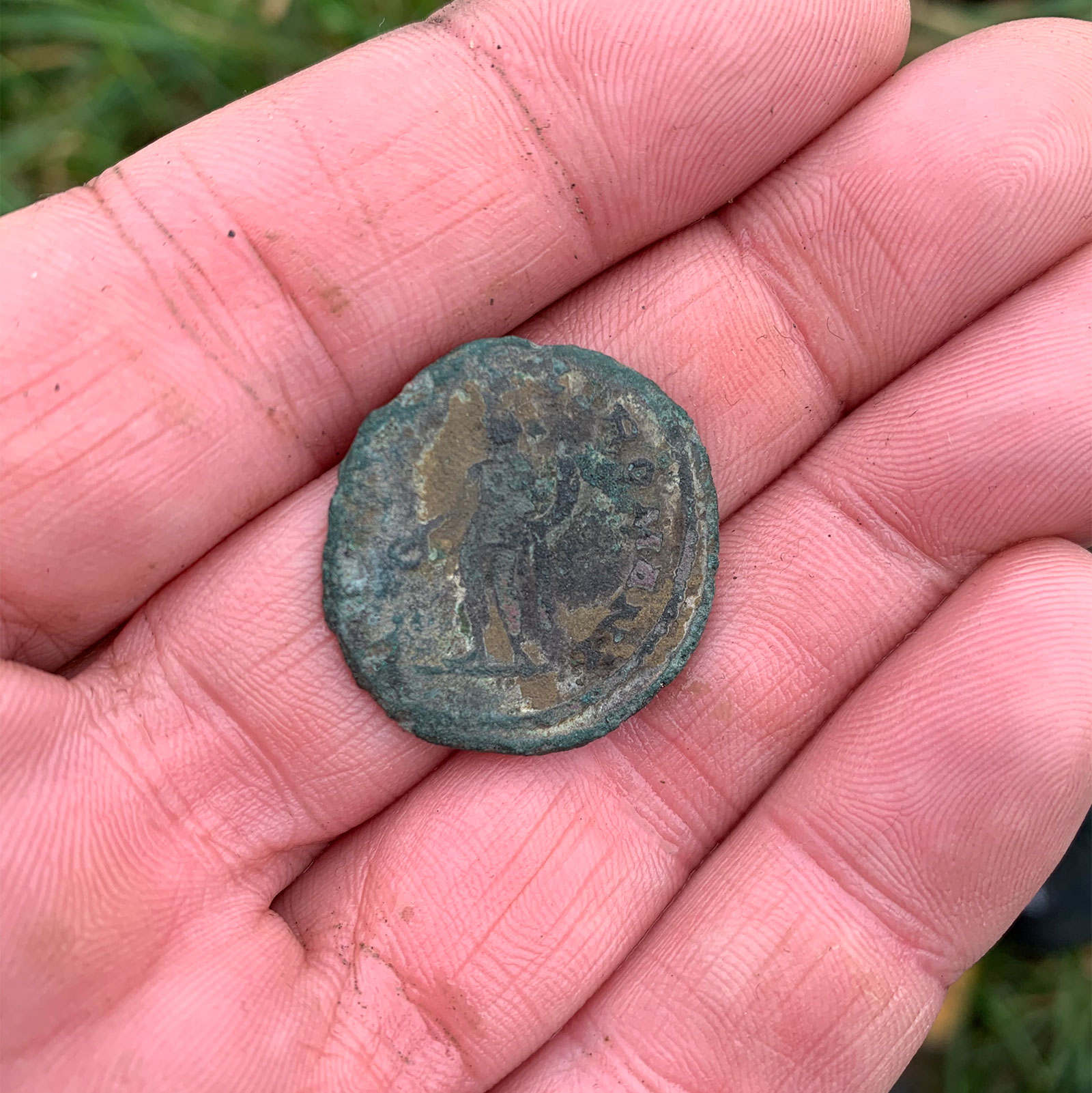
what have the romans…
So having found my first silver hammered coin I didn’t think it could get much better. Even though it’s a coin that’s fairly common in the world of hammered’s, it was still a thrill to find my first. But my continued desire to find objects from further back in time has once again been rewarded, and this time it was Roman!
It was another cold and wet day but I was getting some pretty good signals. A lot of it turned out to be trash, but you keep going because you know at some point it will be something good. The field I’m detecting on has thrown up all sorts in the short time I have been searching it, and from a wide range of periods in time. I have always been confident that I would find something Roman at some point due to the close proximity of the known site of a Roman villa. Finally it’s happened, I’ve found my first Roman coin!
When I first pulled it out of the ground I thought it might be a toasted George III penny, it was about the same size and because of the mud it looked like it would be faceless. But after rubbing away some of the mud a figure slowly appeared, a figure that looked positively roman. I could also just about make out the word ROMANI, that was it, no question that I had my first roman coin!
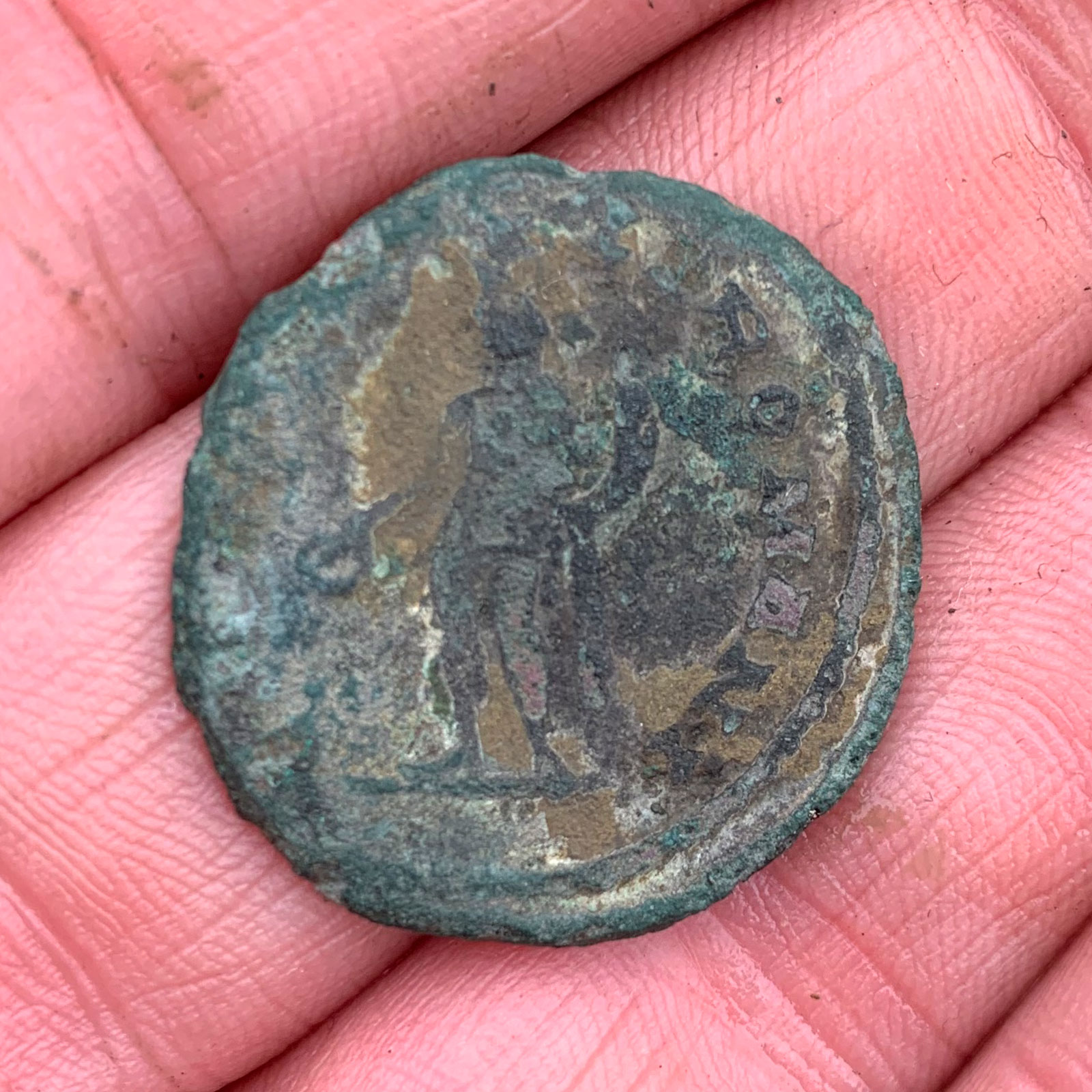
The word ROMANI can be seen.
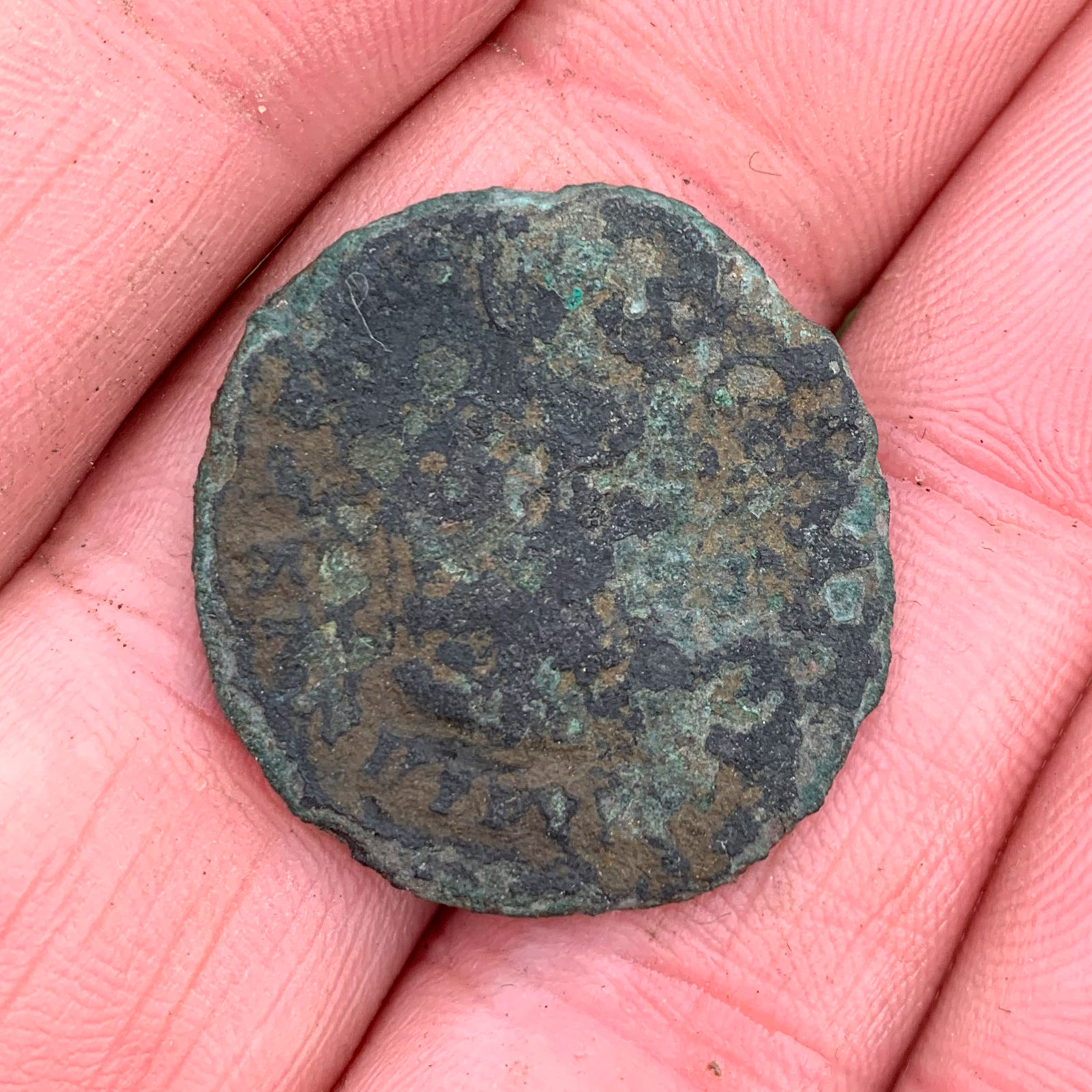
A worn unidentifiable bust.
I immediately sent a photo on messenger to the curator of my local museum and he came back fairly quickly to confirm it was indeed my first Roman coin. I was over the moon! When I got back home I was straight on to google to try and research my new find. The first thing I found out is that the word ROMANI belongs to the phrase ‘GENIO POPULI ROMANI’. The use of the dative (Genio) shows the inscription to be dedicatory and means “To the guardian spirit of the people of Rome”. The standing figure represents this Genius, and holds a cornucopiae, from which all riches flow, and a patera, a small circular dish used when making sacrifices.
Because the bust on the other side has been so badly worn its difficult to know who to attribute it to, but it’s most probably from the Maximian period. He was Roman emperor from 286 to 305 which would mean this coin is over 1700 years old. That’s the bit that sends shivers down my spine, the fact that the last time a person held this coin was over 1700 years ago!
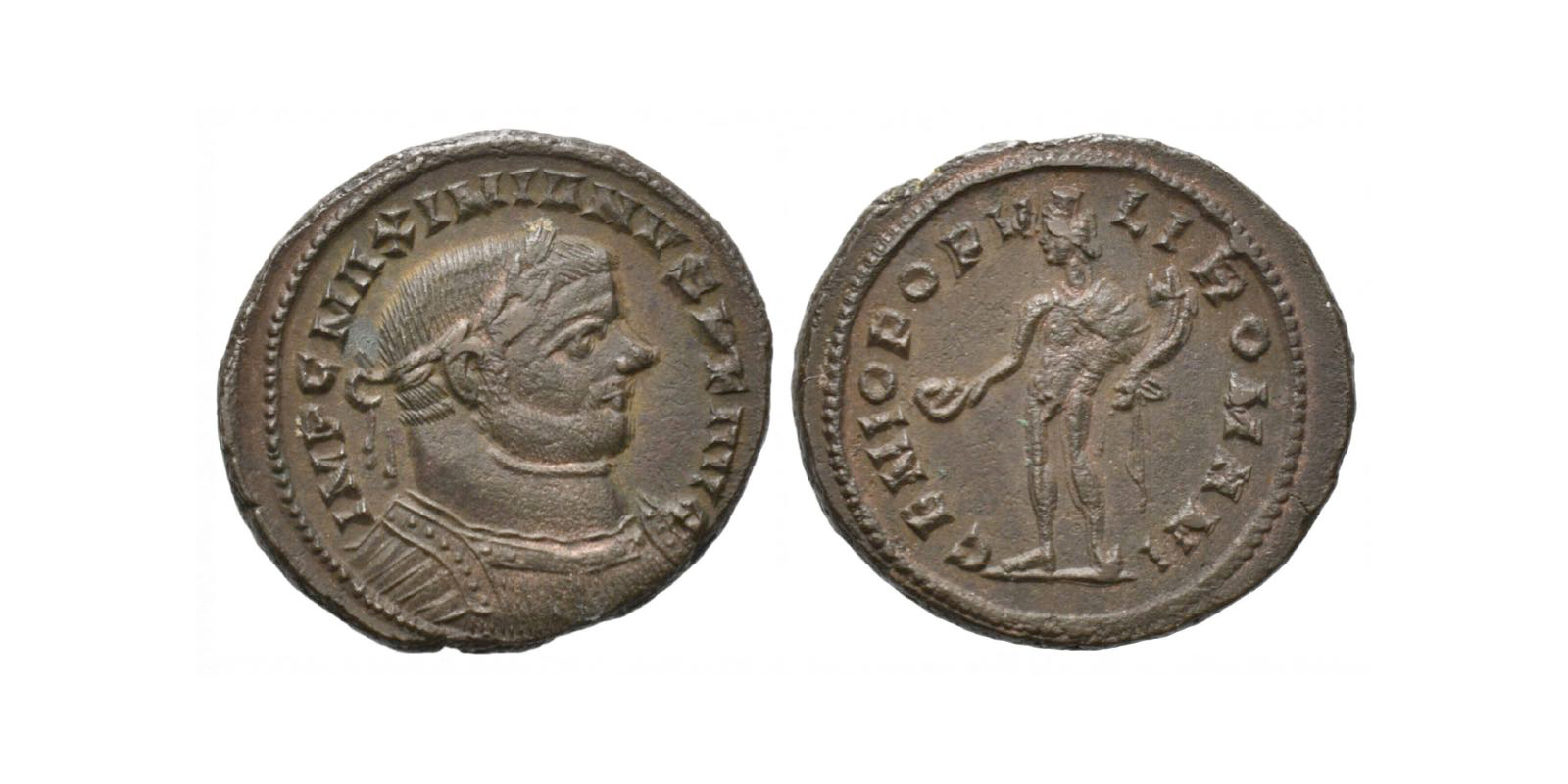
A coin from the same period in good condition.
I don’t think I’m ever going to tire of this hobby. Even though a lot of the time I’m pulling up rusty nails, ring pulls, screws and bits of old farm machinery, the fact that every now and then you will find things like a Roman coin make it all worth while. I know this particular coin is in bad condition, and in monetary terms isn’t worth very much. But again, it’s about the history this coin holds, that connection to someone in the past, 1700 years in the past!
The most rewarding part is that I found this little piece of history. I went out in search of it and I found it, which leaves me with one thought, what else is left out there for me to find? What ever it is, keep following my blog and we will find out!
update…
A quick update to this blog as I have just found my second Roman coin! This one was found in the second field that I have permission on which is just a few hundred yards from the first. This time it’s silver and like the first Roman coin is pretty beaten up! You can just about see the bust and surprisingly that seems to be enough to identify it. The coin is now registered on the PAS database as a denarius, possibly of Elagabalus, the bust does look to have similarities!
Doing a little research I have found out that Elagabalus officially known as Antoninus, was Roman emperor from 218 to 222, while he was still a teenager. Yet again the finds keep going back further in time and hopefully at some point I will find a roman coin in much better condition!
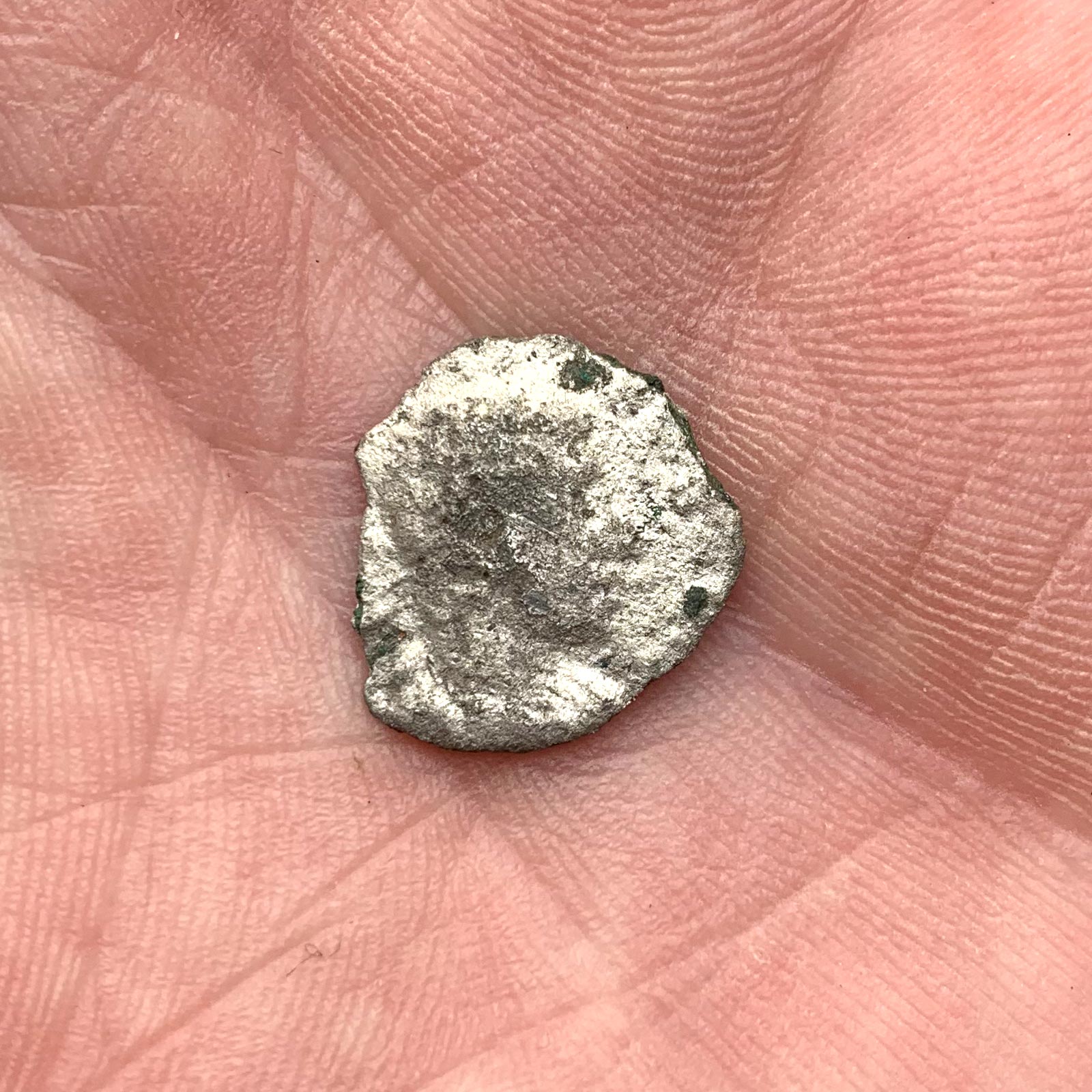
The bust is just visible.
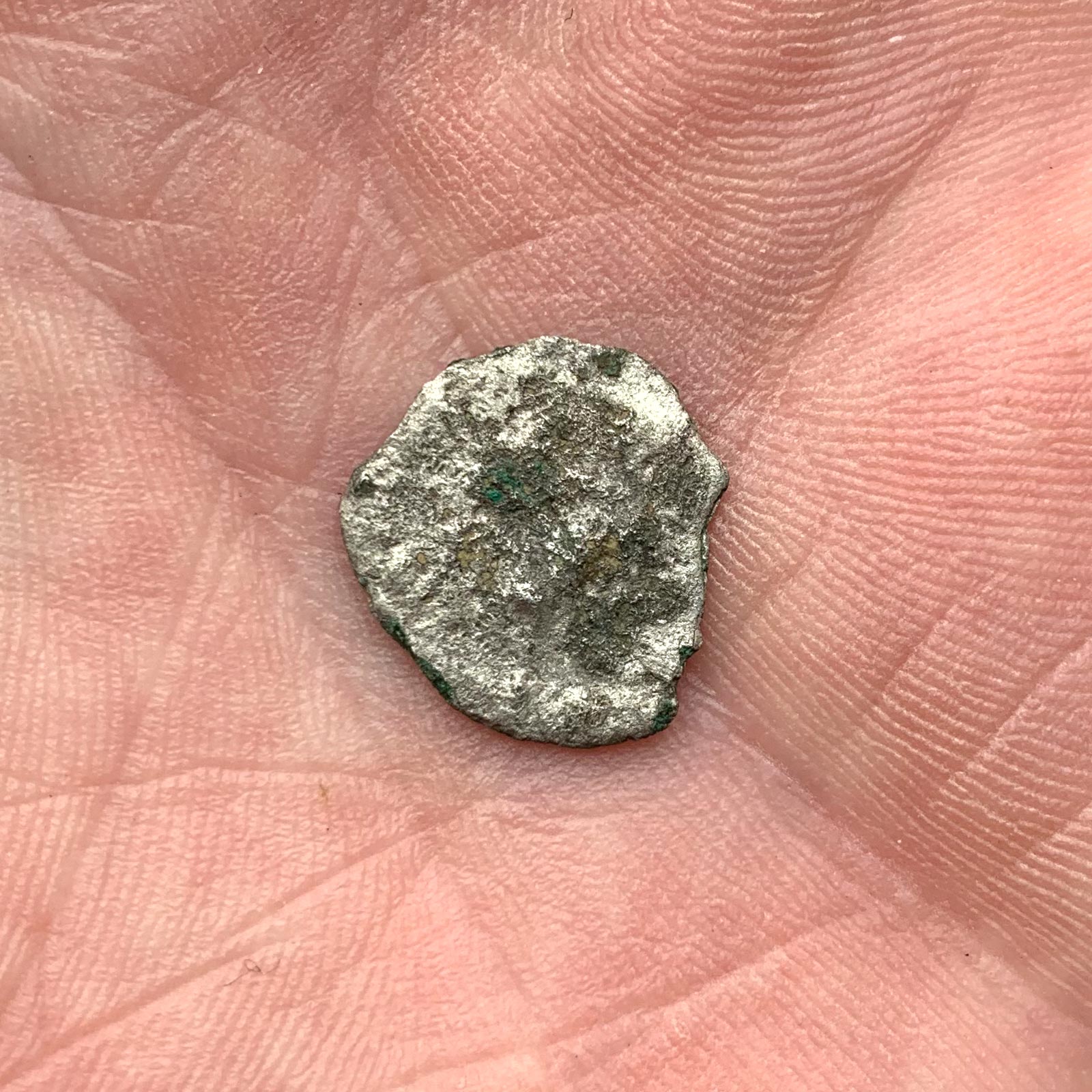
The reverse is quite toasted!
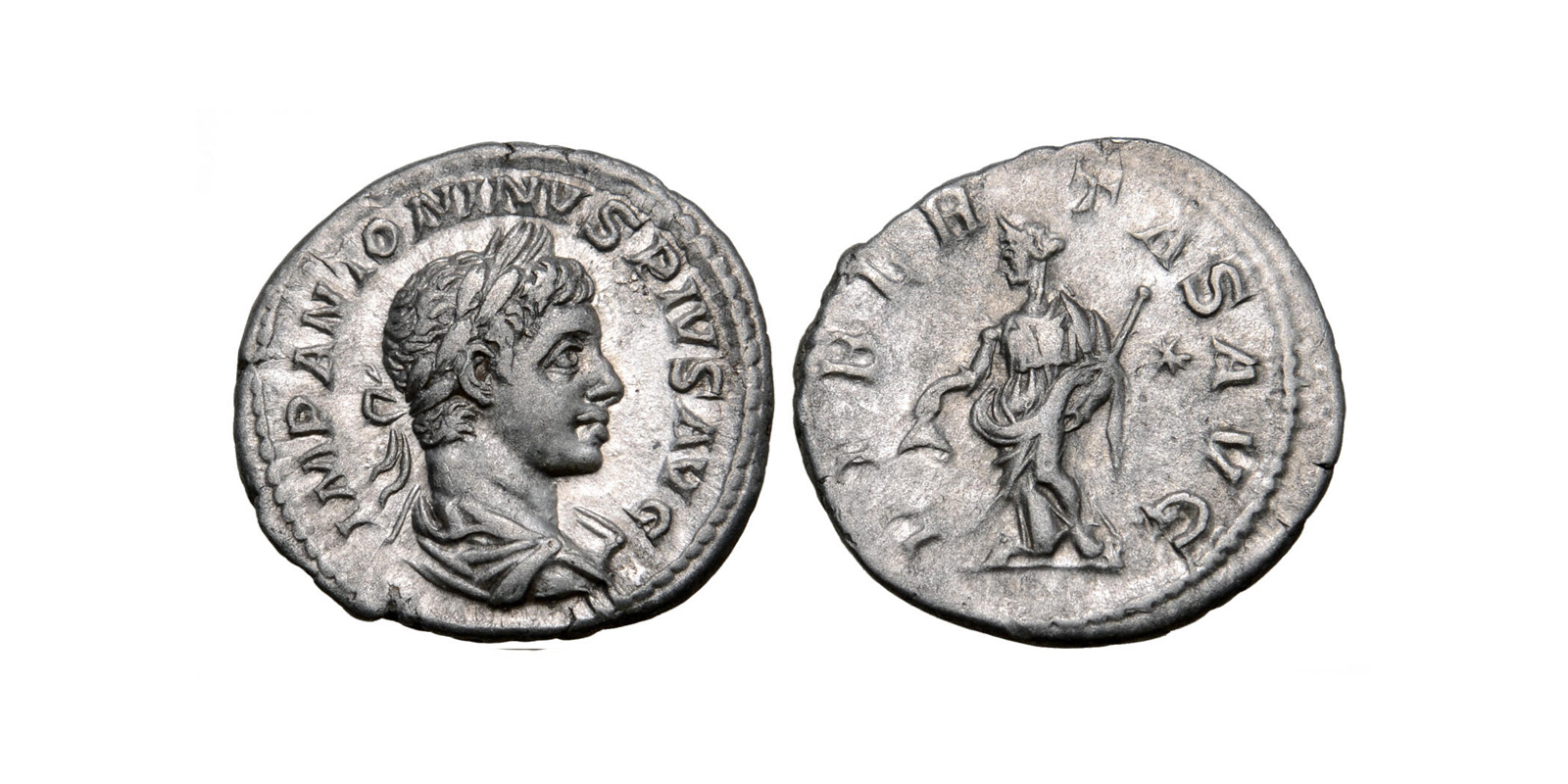
This is what the Silver Denarius of Elagabalus should look like.

It’s also similar to Severus Alexander (Roman emperor from 222 – 235)
another update…
So it would seem I’m not done with my journey back in time. This weekend the fields are taking me back to the iron age as I have just discovered my first celtic coin. Again like both of the roman coins I have found its pretty beaten up, but on one side you can just about make out the outline of a horse. This coin can most likely be attributed to King Tasciovanus, who ruled from 20BC to 9AD before the Roman occupation of Britain. King Tasciovanus ruled out of Verlamion (the site of modern-day St Albans) which is not that far from where I am detecting in Hitchin.
I have been told this coin is either a copper core or bronze unit but I’m not sure which. What I am sure of is that being over 2000 years old it is the oldest coin I have found to date. I keep saying it but the coins really do keep going back further in time. I wonder just how much more history is in this little patch of land that I am learning my detecting skills on? What ever history is still there to be discovered you can rest assured I will be doing my best to find it, all I can say is watch this space!
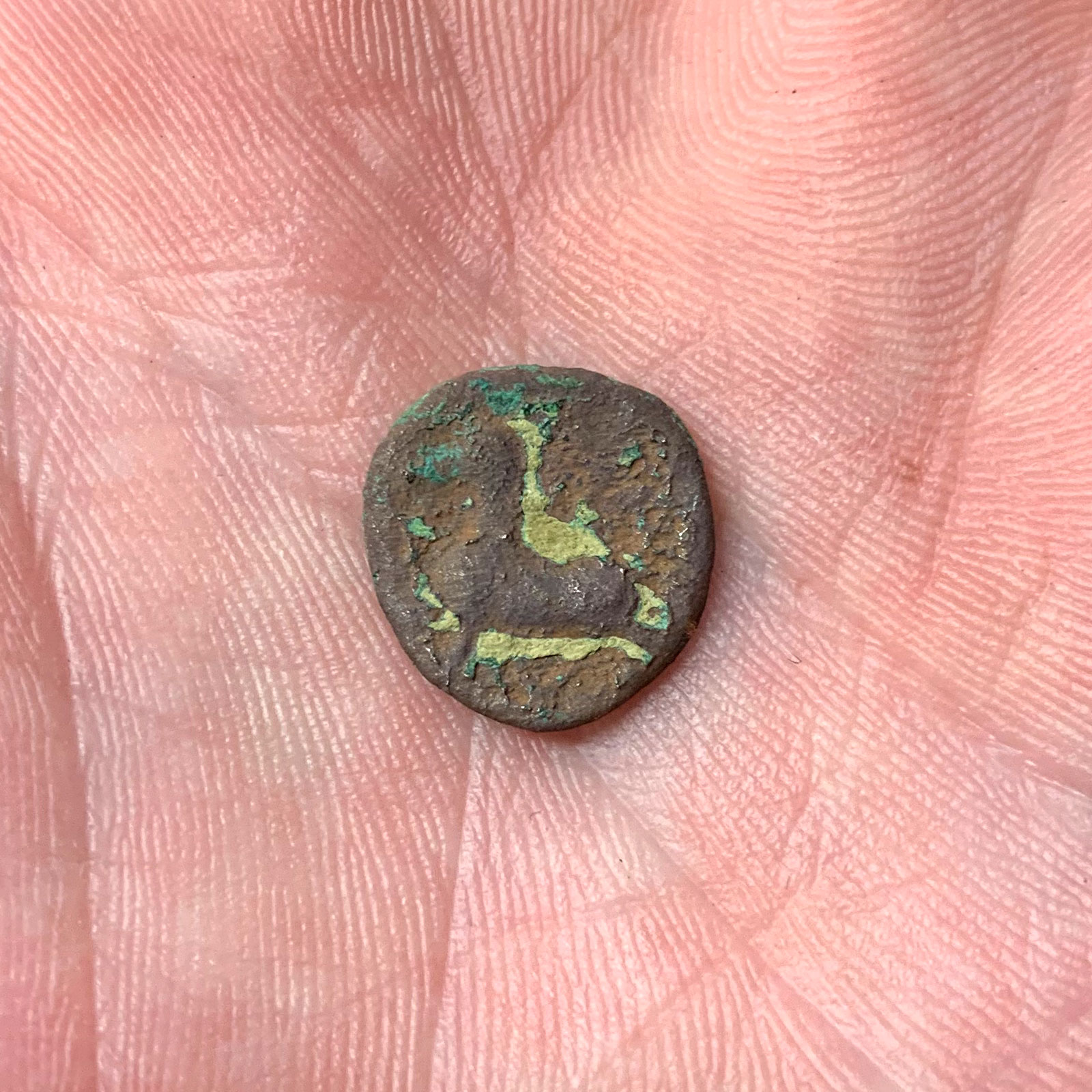
The image of a horse is just visible.

The reverse is quite toasted!
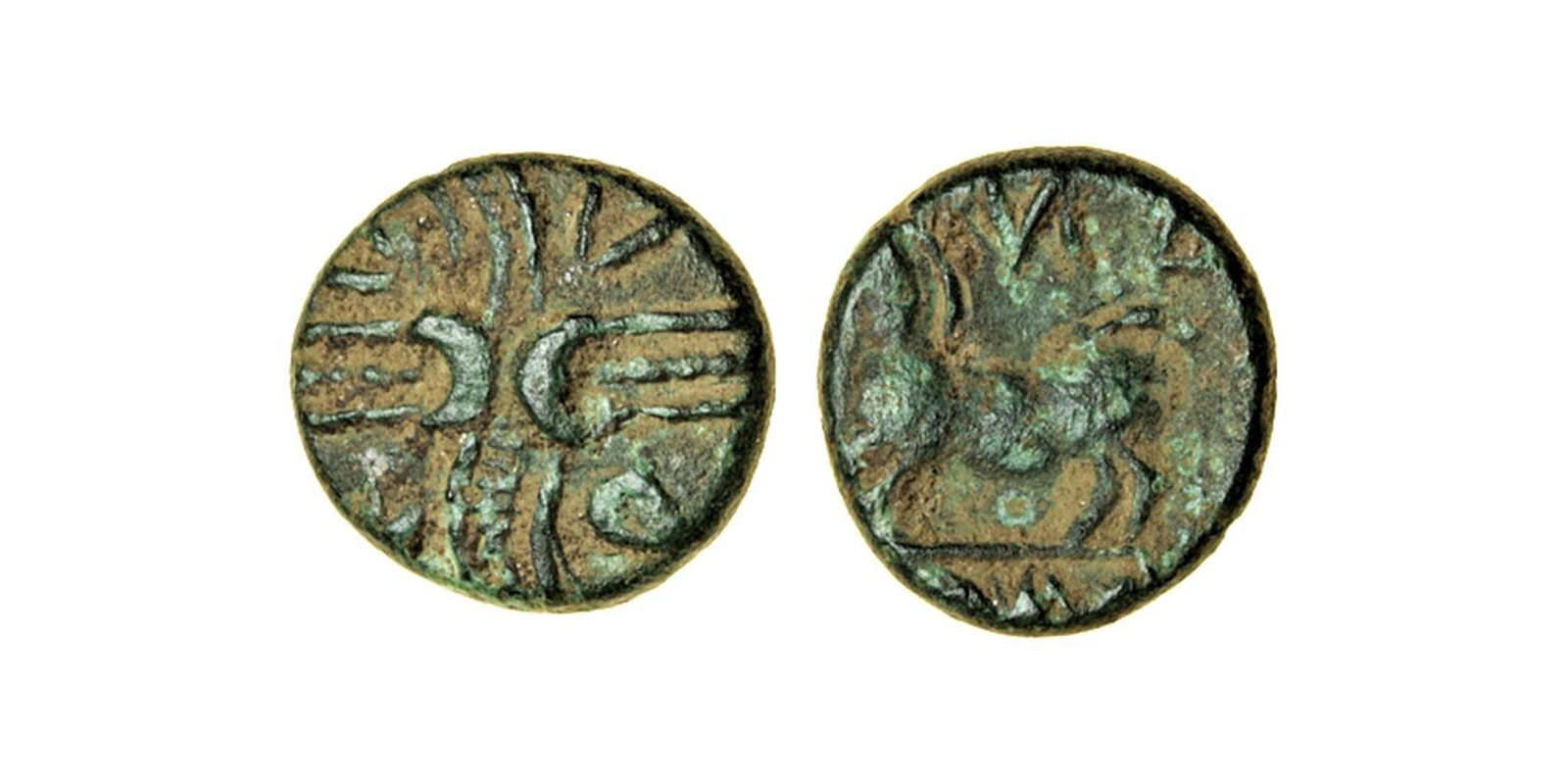
A Catuvellauni, Tasciovanus bronze unit, what my find may have looked like.
yet another update…
This time the Romans are back in town. Like all finds of this type I have sent it through to my local Finds Liason Officer and he came back to me with this reply “It looks like a copper-alloy Dupondius of Claudius I, contemporary copy, dating to the period c.AD 41-54, probably with Ceres on the reverse”.
So this would place it right at the beginning of the Roman occupation of Britain which began in AD 43 during the reign of Claudius. I wonder who lost this coin, maybe a Roman soldier of some description? Obviously I will never know, but it’s great to imagine these things and that’s what I love about this hobby. Imagining the people and times that these objects came from and belonged too, I wonder how much more history this field will give up?
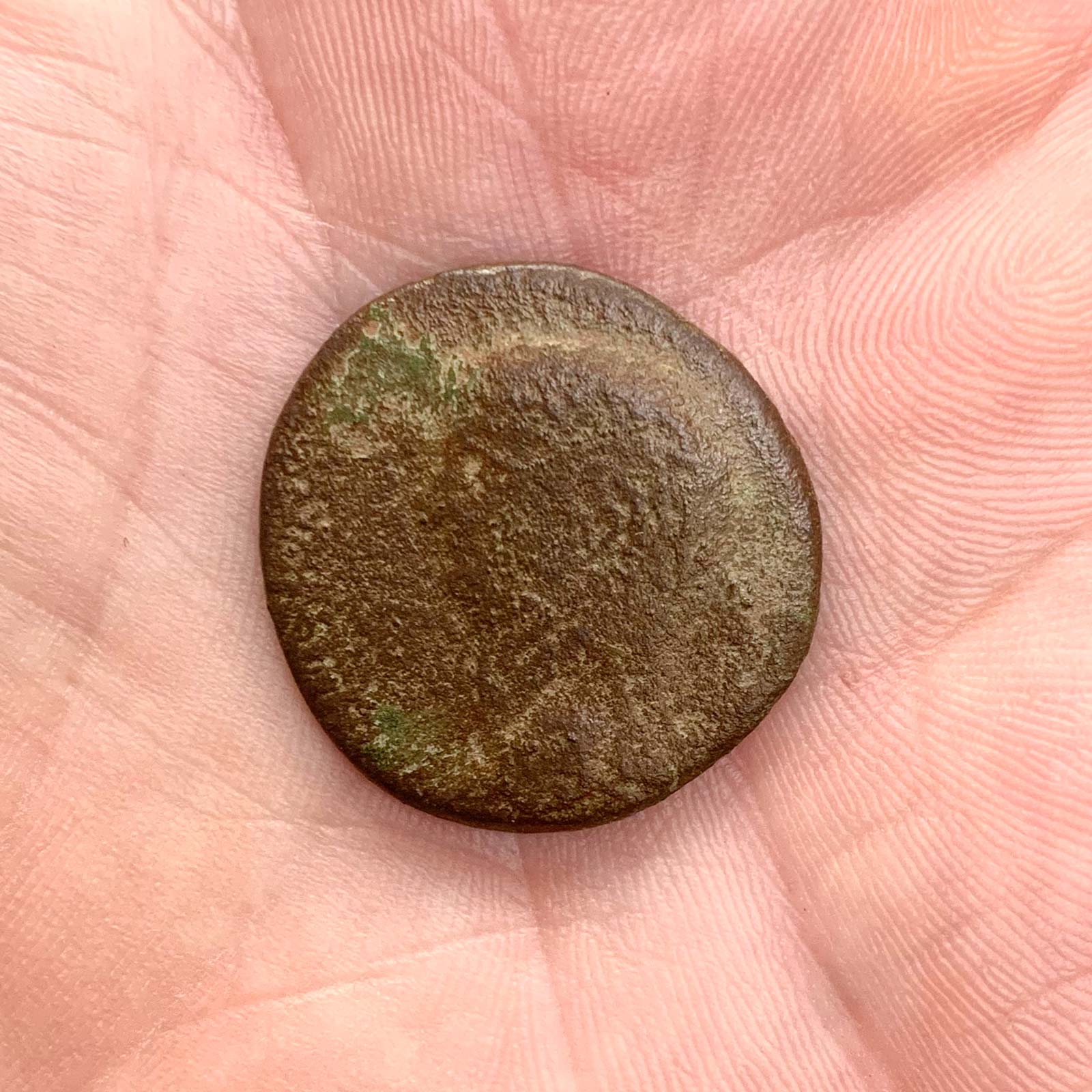
Obverse: The head of Claudius.
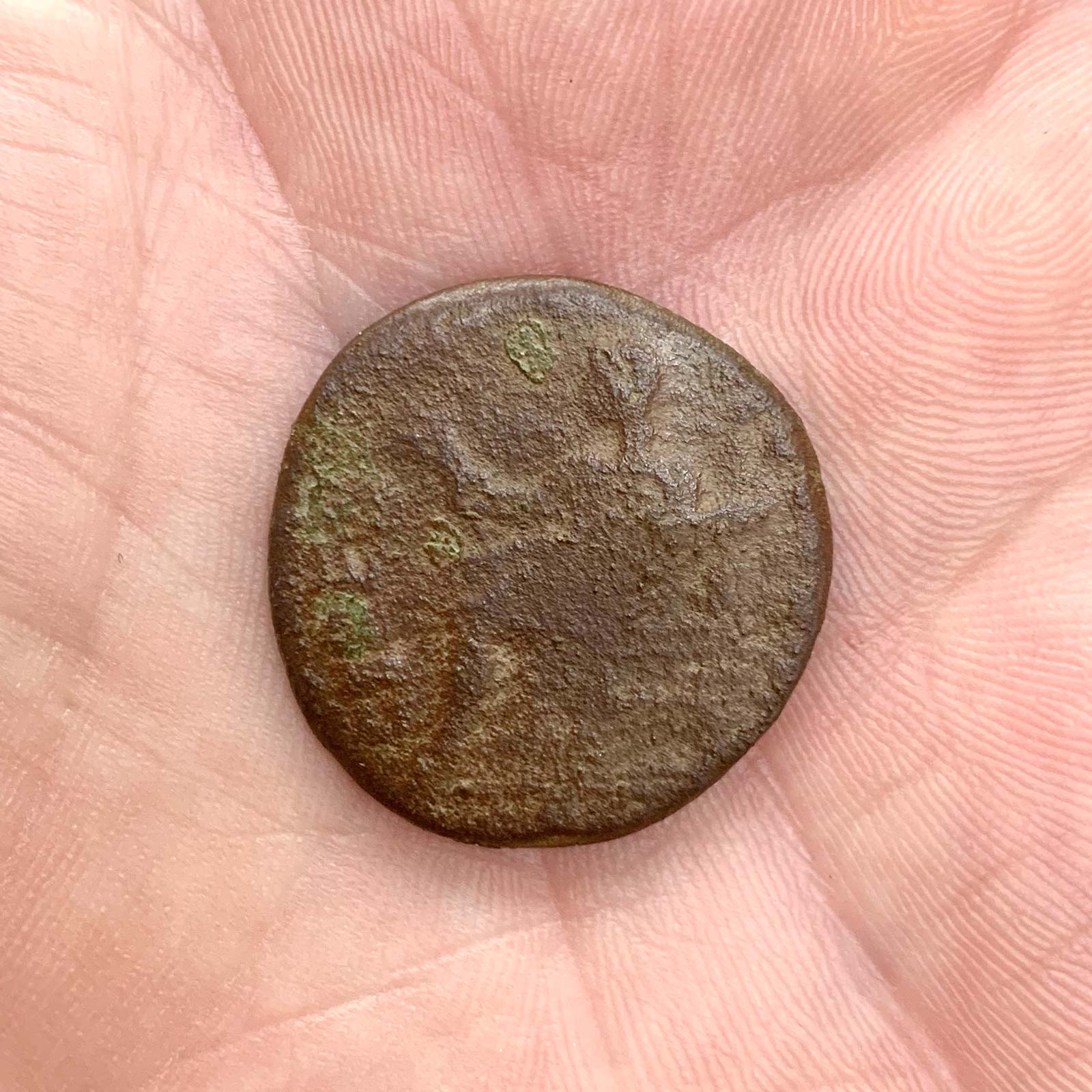
Reverse: The depiction of a Ceres.
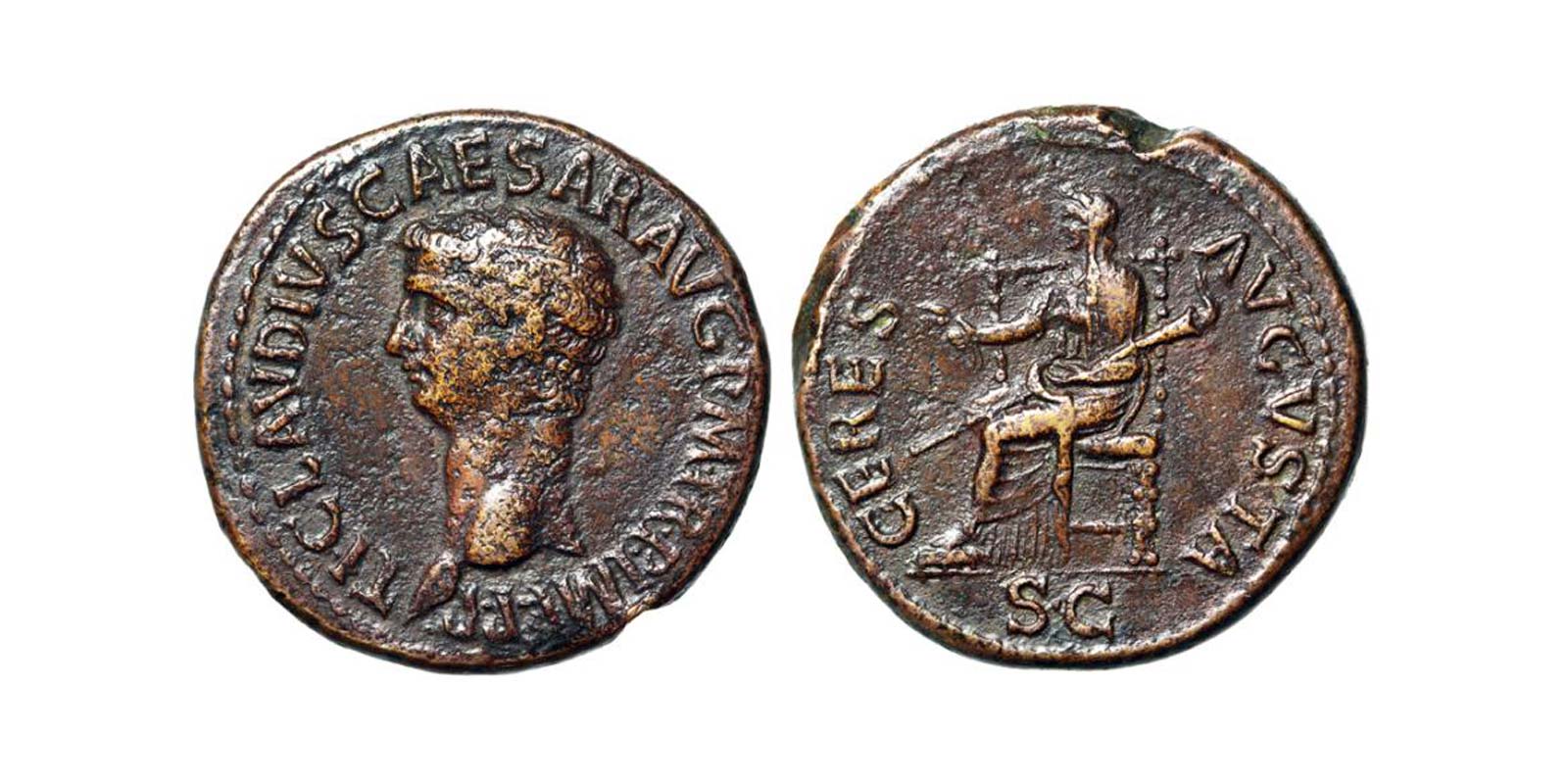
A Dupondius of Claudius I, what my find may have looked like.
